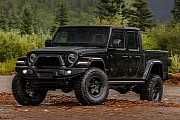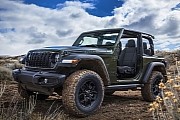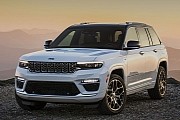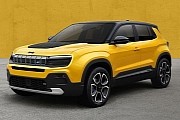history
Everybody knows Jeep. From Kinshasa to the Andes and from Thimpu to Kamceatka, people are likely to recognize one when they see it. Not that, lets say, Mongolians living in yurts have seen one too many of Jeep commercials but because the brand has spread worldwide over the past six decades and that a large percentage of the Earth's 6 billion inhabitants have seen at least a couple of MASH episodes where Jeep vehicles are extensively shown.
Jeep is currently an automobile brand and trademark of the Chrysler Group. Its appearance was sparked by WWII demands, at times when the US army had contracted three car builders to design a rugged, reliable military vehicle. Among the car builders there was one small Pennsylvania based company by the name of American Bantam. who came up with a surprisingly simple and solid design. The car, called Bantam BRC was surprisingly well built except for a small glitch that was regarded by army officials as a major flaw: Bantam's engine failed to meet the army's torque requirements.
The car was rejected although it had been better built than the competitors' models. Its is widely believed that Wyllis-Overland, a company comparable in size to Bantam, that had entered the race for a US army contract had access to the latter's blueprints and technical data. After winning the contract, Wyllis went on to design what would later become today's jeep at their factory in Toledo, Ohio.
Although, it had already appointed the winner, the US army became concerned with Willys due to their impossibility of moving production to another plant if required and because of the company's rather small size that made them vulnerable to espionage and sabotage actions. Thus, the Army commissioned one of the runner-ups, Ford, to build jeeps as well.
It was at this point that the term jeep originated. Ford labeled its vehicles with the GPW initials which are still though to have stood for “general purpose”. However, jeeps were built with a specific purpose in mind and this particular name theory was dropped in favor of another one according to which the G stood for governmental vehicle, the P was a wheelbase indicator while the W stood fro a Wyllis design signature.
Bartam was forgotten and the Ford-Wyllis partnership proved most productive, the two having built over 600,000 units during war time at an average cost of just above $300 per unit. the name Jeep stuck with the vehicle, sparking the genesis of a brand that would change proprietors often until last year.
The first civilian jeep or CJ was produced in 1941 by Wyliss after which the company changed proprietors often. Wyliss was absorbed by Kaiser in 1953 , becoming Kaiser-Jeep in the process. By 1970 the company had become unprofitable and had no other option than to sell its operations to American Motors in 1973.
The development of Jeep vehicles was resumed with funding from Renault who had also become interested in Jeep's activities. NY 1987, AMC had replaced the CJ with the newly designed and insanely popular up to this Wrangler model. After Renault had withdrawn due to auto-market changes, American Motors was bough out by Chrysler who later merged with Daimler Benz to create the Diamler Chrysler group who is presently responsible for manufacturing and marketing the Jeep.
Jeeps are widely known for their ruggedness and reliability on rough terrain and are most famed for their solid axles that allow for increased ground clearance by fitting larger tires. Older Jeeps have extensively served in Vietnam where their name was translated into “just enough essentials parts”. The vehicle's off-road abilities are still its major selling point and the brand itself has amassed an army of loyal fans.
expand










